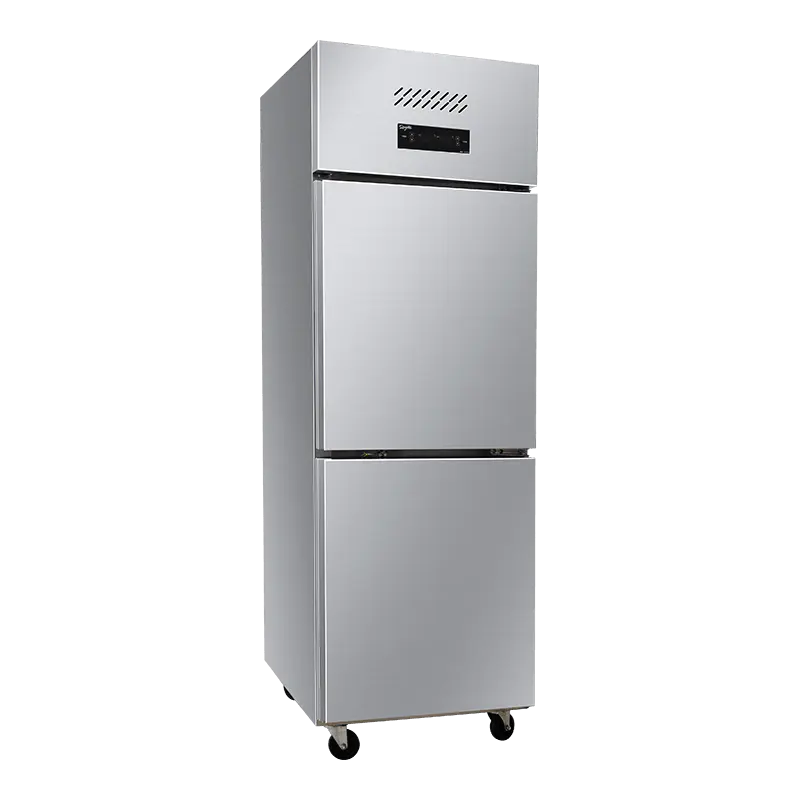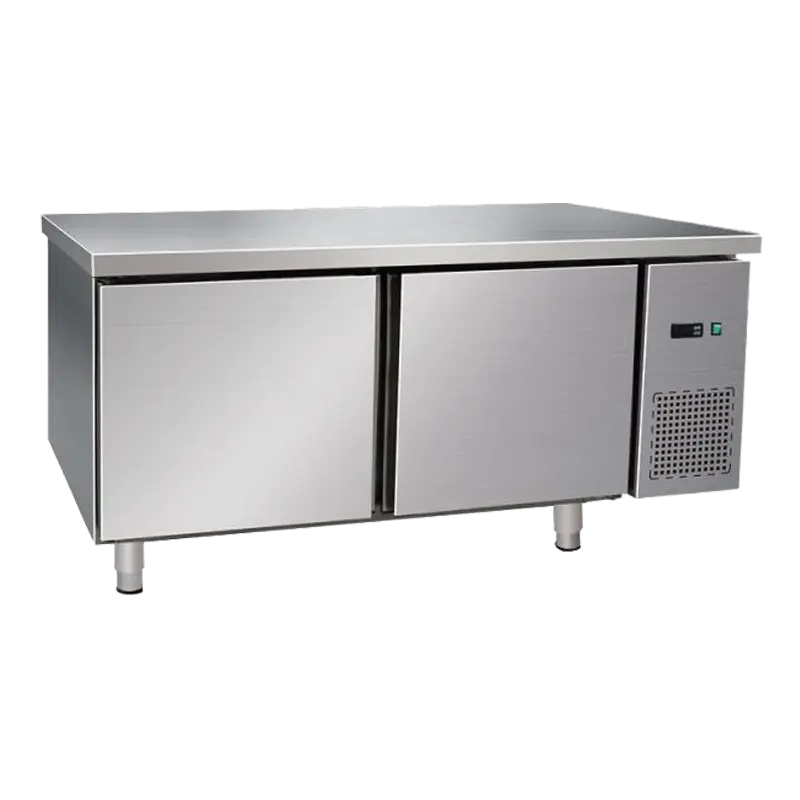1. Overview: what "Chiller" and "Freezer" mean for business use
A chiller and a freezer both remove heat, but they serve different business needs. A chiller typically maintains temperatures above 0°C (commonly 1–8°C) for short-term fresh food, beverages, and process cooling. A freezer maintains subzero temperatures (commonly −18°C for long-term food storage) and is used where product shelf life must be extended or for frozen goods distribution. Choosing between them affects capital cost, energy use, storage layout, inventory planning, and regulatory compliance.
2. Head-to-head practical comparison
2.1 Quick summary
Use a chiller when you need: short-term freshness, cooled display, or process cooling where freezing would damage the product. Use a freezer when you require long-term preservation, frozen distribution, or food safety at subzero temperatures.
2.2 Side-by-side technical table
| Feature | Chiller | Freezer |
| Typical temp range | +1°C to +8°C | −18°C (standard) to −40°C (blast) |
| Primary use | Fresh food, beverages, process cooling | Long-term storage, frozen goods, ice cream |
| Energy intensity | Lower (relative) | Higher (maintaining subzero temps) |
| Typical capital cost | Moderate | Moderate to high (blast freezers expensive) |
| Maintenance focus | Compressor, condenser cleaning, coil checks | Defrosting, door seals, compressor load, oil management |
| Typical lifespan | 10–15 years | 8–12 years |
3. Energy and operating cost example (realistic, step-by-step)
3.1 Assumptions used
To compare operating costs, assume average continuous power draw: chiller 2.0 kW, freezer 3.0 kW. Assume continuous operation 24 hours/day and electricity price $0.15 per kWh.
3.2 Calculation (digit-by-digit)
Chiller energy per day = 2.0 kW × 24 hours = 4 8 kWh. Cost = 4 8 kWh × $0.15/kWh = $7.20 per day.
Freezer energy per day = 3.0 kW × 24 hours = 7 2 kWh. Cost = 7 2 kWh × $0.15/kWh = $10.80 per day.
Monthly difference (30 days) = ($10.80 − $7.20) × 30 = $3.60 × 30 = $108.00. Over a year (365 days): chiller ≈ $7.20 × 365 = $2,628.00; freezer ≈ $10.80 × 365 = $3,942.00. These numbers illustrate that freezing typically increases ongoing electricity spend — plan budgets accordingly.
4. Business use-cases and selection guidance
4.1 Retail / hospitality
Restaurants and cafés commonly use chillers for ready-to-serve items, salad bars, and beverage storage; freezers are needed for bulk frozen ingredients, ice-cream, and inventory that must be stored long-term. Consider a mixed solution: chilled prep stations plus a central freezer for back-of-house stock.
4.2 Manufacturing and process cooling
Industrial chillers (water/glycol chillers) are used for process control (extrusion, packaging machinery, HVAC). Freezers are used when a product must be frozen during processing (e.g., blast freezers for IQF — individually quick frozen — food lines). Match the equipment to process temperatures and throughput.
4.3 Cold chain distribution
Distribution centers that supply supermarkets will need large capacity freezers for long-term hold and separate chillers for palletized chilled products. Track temperature zones, door cycles, and insulation to minimize temperature excursions and product loss.
5. Installation, maintenance, and operational checklist
- Verify required temperature range and choose equipment rated to maintain it under full load.
- Calculate cooling capacity (kW or BTU/hr) based on max load: product mass, infiltration, door openings, and ambient conditions.
- Plan the electrical service: confirm voltage, breaker size, and inrush current for compressors.
- Provide adequate condenser ventilation and access for annual maintenance; schedule condenser coil cleaning monthly or per manufacturer.
- For freezers, add defrost strategy (auto or manual) and monitor door seals; failing seals increase energy and risk product thaw.
- Implement temperature logging and alarms for traceability and to meet food safety regulations.
6. Regulatory, quality, and product-safety considerations
6.1 Food safety
Different jurisdictions require specific cold-hold temperatures for perishable goods. Example: many regulators expect chilled foods to be ≤5°C and frozen foods at ≤−18°C for long-term storage. Always verify local standards and implement validated temperature monitoring with logs and alarms.
6.2 Labeling and shelf life
Freezing extends shelf life but may change texture and quality; some products tolerate chill better than freeze. Plan inventory rotation, first-in-first-out (FIFO) rules, and clear labeling for date-in/date-out to reduce waste.
7. Business finance: ROI factors to compare
When comparing ROI, include capital cost, installation, ongoing energy cost (see section 3), maintenance labor and parts, product loss reduction, and regulatory compliance risk. For high-turnover chilled products, lower energy and faster access can justify chillers. For long shelf-life and frozen distribution, freezers reduce spoilage and enable bulk purchasing savings that offset higher running costs.
8. Final practical buying checklist (quick reference)
- Define target temperature range and tolerance (e.g., ±1°C).
- Calculate required cooling capacity including safety margin (usually +20%).
- Estimate daily kWh and multiply by local energy price for operating cost.
- Confirm service access, ventilation, and electrical supply onsite.
- Ask suppliers for performance curves, warranty, and local service contacts.
- Plan monitoring and maintenance schedule before installation completes.
9. Quick decision guide
If you need short-term freshness, faster access to product, and lower running temperature above freezing, choose a chiller. If you need long-term preservation, bulk frozen inventory, or cold-chain shipping at subzero temps, choose a freezer. Many businesses benefit from a hybrid approach: chillers for front-of-house and process cooling, plus a central freezer for long-term inventory.


 English
English русский
русский Español
Español عربى
عربى













